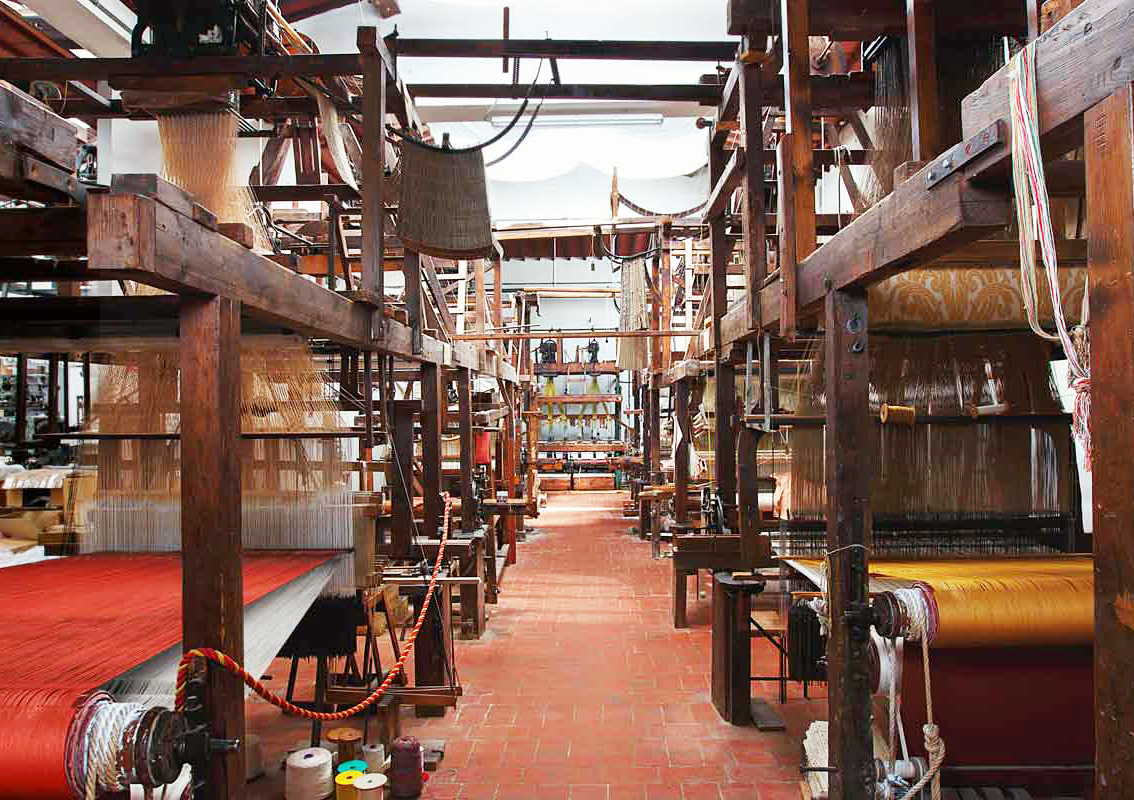Five hundred years after the death of Leonardo da Vinci, a silk mill in Tuscany is still using one of his designs as it shuttles some of the finest threads in the world across its looms. Tucked away in the historic San Frediano neighborhood in Florence, L’Antico Setificio Fiorentino was founded in 1786 and is one of the oldest silk workshops in Europe.
Its looms date from the 17th, 18th and 19th centuries, but the jewel at its heart is a machine to unwind the reels of threads, which was designed by Renaissance genius Leonardo da Vinci. The warping machine was made in the late 17th century according to da Vinci’s original design. It is still used today to make passementerie tassels and cords. The device is used to prepare the threads before they are placed on the loom, following a technique that has been closely guarded for centuries.
Golden chenille, damask and taffeta with floral or geometric motifs are among the fabrics made in the shop and sell between $200 and $1,500 per yard. The workshop belongs to the family of Italian fashion designer Stefano Ricci and manufactures fabrics, lace and ribbons in styles and colors favored by the House of Medici, the famed Italian banking family and political dynasty. It was during the Medici’s rise to power that silk manufacturing enjoyed a boom along the banks of the Arno River.
Fabrics produced by L’Antico Setificio Fiorentino can be found in places of grandeur both in Italy and abroad, from Italian palazzos and the famous Uffizi Galleries in Florence, to the royal residences of Europe. Designs and fabrics that have been produced through the ages are preserved in the workshop’s historical archives, which are visited by tourists and school groups alike.
Both a museum and a workshop, the 15 artisans who create the precious fabrics on the centuries old looms feel privileged to work there. Each fabric must be woven by the same person, with a continuous rhythm, otherwise, imperfections may occur. It generally takes about four hours to produce one yard of cloth, but such is the nature of the work worthy of the Court of Lorenzo the Magnificent himself.





